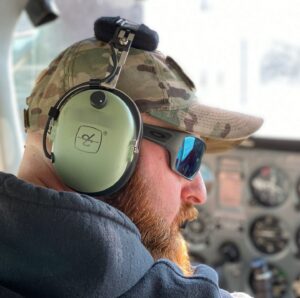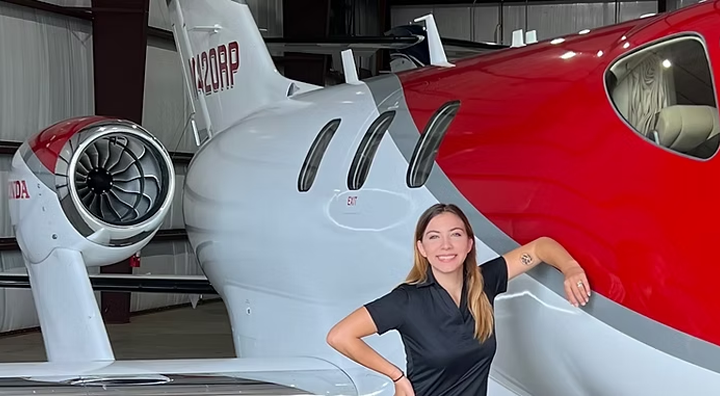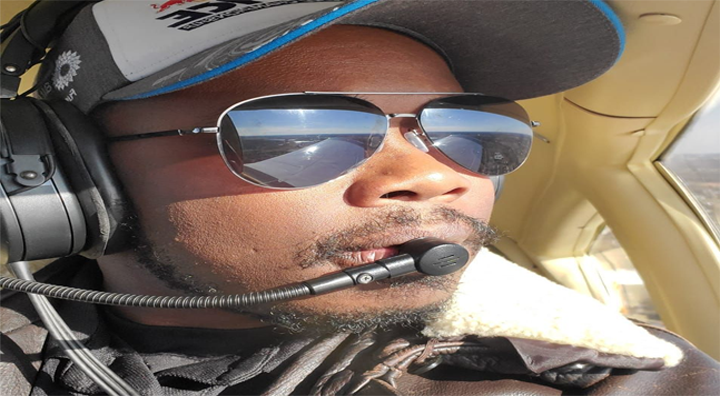How to Become an Aircraft Mechanic: Mike Salmon’s Journey from Military to Entrepreneur
By Shawn Staerker

Have you ever wondered what it takes to build a successful career in aviation maintenance? Mike Salmon’s journey from military helicopter mechanic to business owner offers valuable insights into how to become an aircraft mechanic and thrive in this demanding field.
Finding His Wings: The Accidental Aviation Start
Mike Salmon didn’t grow up dreaming of aviation. In fact, when he walked into the military recruiting office in 2005, he planned to become a military police officer. But a chance conversation changed everything.
“I wanted to be an MP,” Mike recalls. “But as I was sitting down with the recruiter, he pointed to a poster of this big Apache helicopter coming in for landing and said, ‘What about this?'”
Despite having limited mechanical experience (he admits to “ruining a couple of engines” on his teenage cars), Mike was intrigued. The recruiter assured him the Army would teach him everything he needed to know. Just like that, Mike signed up to become an Apache helicopter mechanic.
That split-second decision launched an 11-year military career that included deployments to South Korea and Afghanistan, marriage, starting a family, and building skills that would become the foundation of his future.
High-Stakes Helicopter Maintenance
Imagine maintaining attack helicopters in a combat zone, knowing that lives depend on your work. That was Mike’s reality during his deployment to Afghanistan in 2011-2012.
“Our mission was to keep our fleet of eight Apaches at Jalalabad Airfield mission ready at all times,” Mike explains. “We were always responding to troops in contact. We always had two-man teams flying out at the drop of a hat.”
For Mike and his team, focusing on their clear mission made even the toughest days manageable: “Let them do their job, let them support the ground force commander. Let them be as lethal and effective as possible to make sure that we minimize the loss of American life.”
The Civilian Transition: Learning How to Become an Aircraft Mechanic Outside the Military
After nearly 11 years of service, Mike faced the daunting transition to civilian life. His biggest challenge wasn’t finding a job—it was finding a purpose.
“The hardest part is no longer having that deep of a sense of purpose when you get out,” Mike explains. “A lot of people think that once you move on, your mission definitely changes. You’re not saving lives. You’re not out there fighting wars anymore.”
Mike’s advice for transitioning military members? “You’re not going to find the direct one-for-one equivalent. You’ve got to replace that with something and find your new ‘why’ out in the civilian world.”
Mike’s first post-military job was as a civilian contractor back in Afghanistan—a position he quickly realized wasn’t for him. With a wife and three-year-old at home, the deployment lifestyle no longer fit.
The Certification Path: A Critical Step to Become an Aircraft Mechanic
After returning from Afghanistan, Mike earned his Airframe and Powerplant (A&P) license, the essential certification for aircraft mechanics in the civilian world. Through a military connection, he learned about an opportunity with Air Evac Lifeteam, an air ambulance company serving rural communities.
“As luck would have it, I had just happened to buy property about an hour away from that base,” Mike says. “And it just so happened that they needed a mechanic.”
At Air Evac, Mike discovered a new purpose: “It allowed me to be that guy again, that is in charge of putting up a safe helicopter for my flight crew, my nurse, my paramedic, and my pilot to go out and do their job of saving lives every day.”
Working as the sole mechanic for a Bell 206 helicopter at a rural Alabama base, Mike was on call 24/5. Sometimes he’d get calls at 2 or 3 a.m. to fix a helicopter stranded on a hospital rooftop. But the flexible schedule also gave him time to earn his bachelor’s degree in aviation maintenance from Embry-Riddle Aeronautical University.
Taking Flight as an Entrepreneur
Mike’s passion for aviation, combined with a family history of entrepreneurship (his grandfather owned hotels and his father ran a construction company), eventually led him to co-found Aviation Design and Supply (ADS).
The idea came from conversations with shop owners at industry conventions. These shops faced common challenges: technician shortages and time-consuming preparation work for avionics upgrades. Mike and his partners realized they could fill these needs.
One of their first products? Installation hardware kits for Garmin autopilots.
“We had shops telling us, ‘If you guys put a kit together, I’d buy that in a heartbeat,'” Mike says. “So we decided that one of our verticals was going to be autopilot installation hardware kits.”
What started with 50 kits has grown to 75 kits covering 150 different airframes. The company now distributes through major aviation suppliers and has expanded into other services, including work order software and engineering drawings.
Advice for Those Wanting to Become an Aircraft Mechanic
For young people trying to find their place in aviation maintenance, Mike offers refreshingly honest advice: don’t force it.
“Don’t look for it. It’s going to find you, and the timing will be right,” he says. “And you’ll just know.”
While career paths like becoming a pilot have well-defined steps, Mike believes other aviation careers can develop more organically—if you put yourself in the right position.
His top tips:
- Network constantly: “Make a lot of friends, be out there, be seen, be known.”
- Excel at whatever you’re doing now: “Be the absolute best at what you do.”
- Embrace the challenge: “Know that it’s hard. It’s okay that it’s hard. The juice is worth the squeeze.”
- Stay persistent: “There’s going to be extreme highs and extreme lows, but that’s what makes our industry so great. Don’t quit.”
Mike also believes in giving back by helping military veterans transition to aviation careers. “I know 100% that the type of person that a transitioning veteran is has those hard skills and soft skills to make it in the aviation industry,” he says.
The Future of Aviation Maintenance
Despite industry challenges like technician shortages, Mike remains optimistic about aviation’s future.
“I think it’s bright because there’s plenty of people that feel the same way that I do,” he says. “There’s a lot of people that are in the industry now that are willing to help because they have a profound love for what they do.”
He encourages everyone in aviation to inspire the next generation—whether through formal programs or simple activities like the paper airplane class he recently taught for his children’s homeschool co-op.
“Plant the seed,” Mike suggests. “Get them excited about the industry.”
Mike lives by a quote that hung in his father’s office: “Aviation in itself is not inherently dangerous, but to an even greater degree than the sea, it is terribly unforgiving of any carelessness, incapacity, or neglect.”
This perspective—respecting aviation while embracing its possibilities—has guided Mike’s remarkable journey from accidental Apache mechanic to successful aviation entrepreneur.
Want to hear more about Mike Salmon’s journey and get his advice on building an aviation career? Listen to his full interview on The Future in Flight Podcast Episode #1 here: https://futureinflight.com/the-journey-from-mechanics-to-mastery
You can also connect with Mike on LinkedIn or visit Aviation Design and Supply on Facebook and Instagram!


